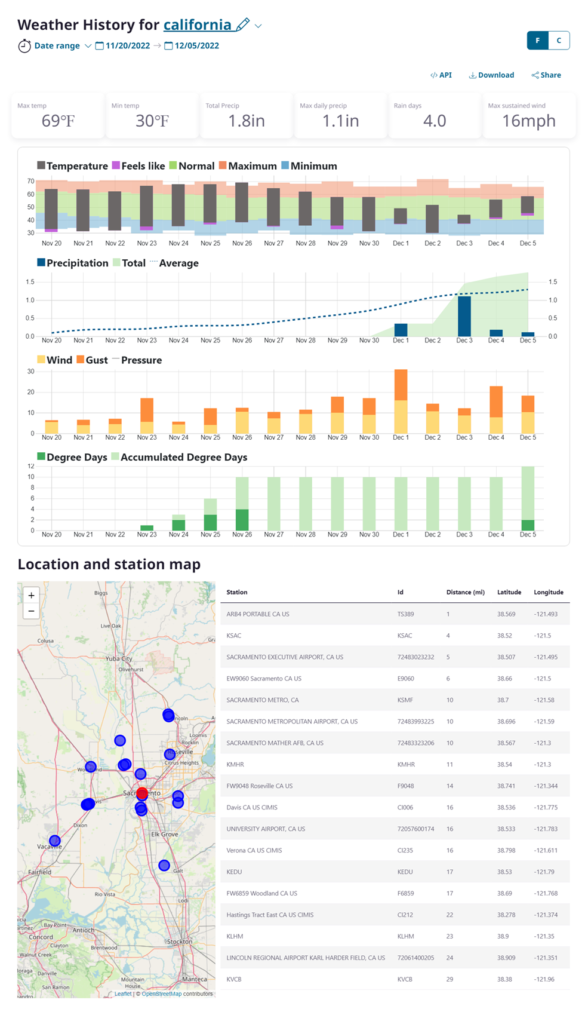Update This Week
Another storm will drop several feet of heavy snow in California’s Sierra Nevada throughout the weekend, and another storm will lash the Midwest with strong winds.
The Weather Channel named the first Winter Storm Carli, significantly affecting California and the Rockies after moving in from the Northwest. After the forecast, keep reading to learn more about these effects and other weather events.

On Sunday, rain showers and mountain snow will be from Washington too much of California. The northern Rockies and the Great Basin will also receive snow.
A little rainfall might fall in Arizona and New Mexico.
Despite a minor decrease in precipitation on Monday, rain and snow showers are anticipated throughout the Four Corners through at least Tuesday.
The Sierra Mountains of California are expected to receive multiple feet of new snow, contributing to the heaviest extra snowfall totals through Monday.
This may occasionally make travel hazardous, if not impossible, on Saturday and Sunday.
In the higher elevations of the Rockies, from Idaho to Utah’s Wasatch and Colorado’s high country, additional snowfall totals of 3-6 inches are anticipated.
Similar to the preceding storm, it is often predicted that through this weekend, rainfall in lower elevations of California will be no more than an inch. Widespread flash flooding is not anticipated, while there could be some annoyance flash flooding in urban, flood-prone regions and possibly landslides or debris flows from recently burned areas. In the Sierra foothills, some higher rainfall totals are conceivable.
Up to 26 inches of snow fell in the Washington Cascades. The city of Seattle experienced its first significant snowfall of the year, with accumulations ranging from one inch at the SeaTac Airport and the downtown area to six inches in Snohomish County and the King County mountains.
Due to heavy snow and strong gusts, almost 60,000 residents in the metro area were left without power from Tuesday to Wednesday.

After that, on Thursday and Thursday night, Carli dumped tonnes of snow on California’s Sierra, closing Interstate 80 over Donner Summit. On Thursday, wind gusts as high as 99 mph were recorded in California’s Mono County, and an 89 mph gust was recorded at Heavenly Ski Summit.
The cyclone is bringing snowfall and blustery winds to the Rockies. Cheyenne Mountain, south of Colorado Springs, reported a wind of 105 mph late on Thursday night. The National Weather Service reported that a home on Colorado Springs’ south side had its concrete shingles blown off by these powerful gusts.
A dust storm developed in parts of Kansas and Colorado on Friday afternoon due to wind gusts of at least 60 mph.
Strong gusts and a brief rainfall were experienced throughout the Great Lakes and Northeast on Saturday, December 3. Increased power outages affected over 80,000 residences, and tree damage was recorded from Michigan to New York.
A winter storm warning has been issued by the National Weather Service in Sacramento for western Plumas County, Lassen National Park, and the western slope of the northern Sierra Nevada counties. This warning is in effect until Friday night.
According to bureau meteorologist Cory Mueller, there won’t be any snow reports until Friday morning.
According to Mueller, as of Thursday evening, the storm, which had its origins in western Canada and the Gulf of Alaska, had dropped between a half-inch and an inch of rain in the Sacramento Valley and between a half-inch and two inches of rain in the foothills.
Shasta County and the southern Cascade Mountains are expected to receive 10 to 30 inches of precipitation, compared to 1 to 3 feet for the Sierra Nevada. Higher mountains are projected to receive the most snowfall, says Katrina Hand, a meteorologist with the Sacramento meteorological office. On Thursday morning, strong ridgetop winds are expected to reach their peak speed of 45 to 65 mph, creating hazardous and even whiteout conditions.
“The actual rain will start after midnight [Friday] and through tomorrow morning,” Rorke predicted as the major cold front moved across Southern California. Rorke predicts there will be between a quarter and a half inches of rain, less than what was predicted for the previous days.
Rorke stated that Southern California needs a strong storm “to drop a lot of water on us.”
Rorke continued, “This is not going to be it.”
